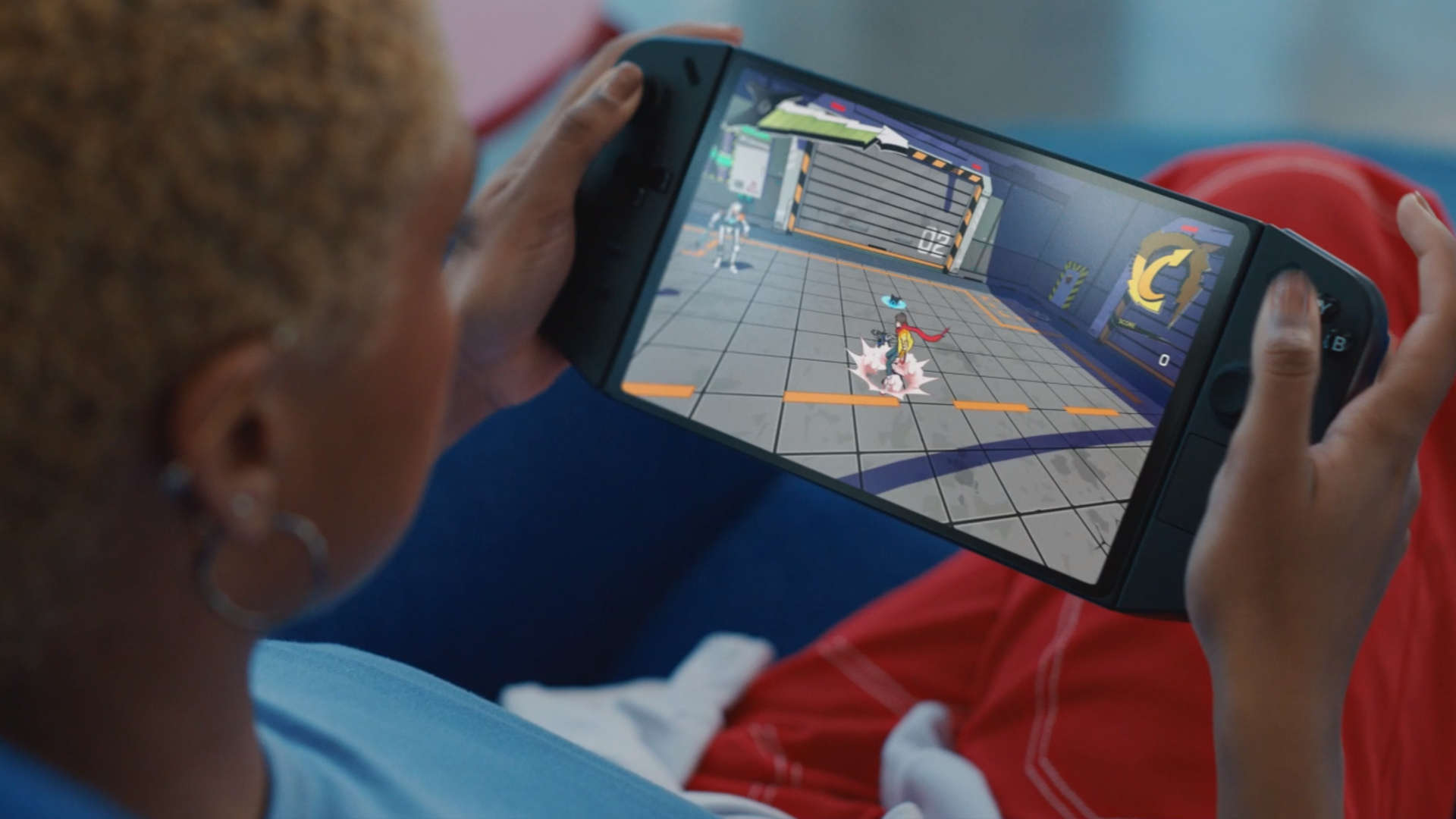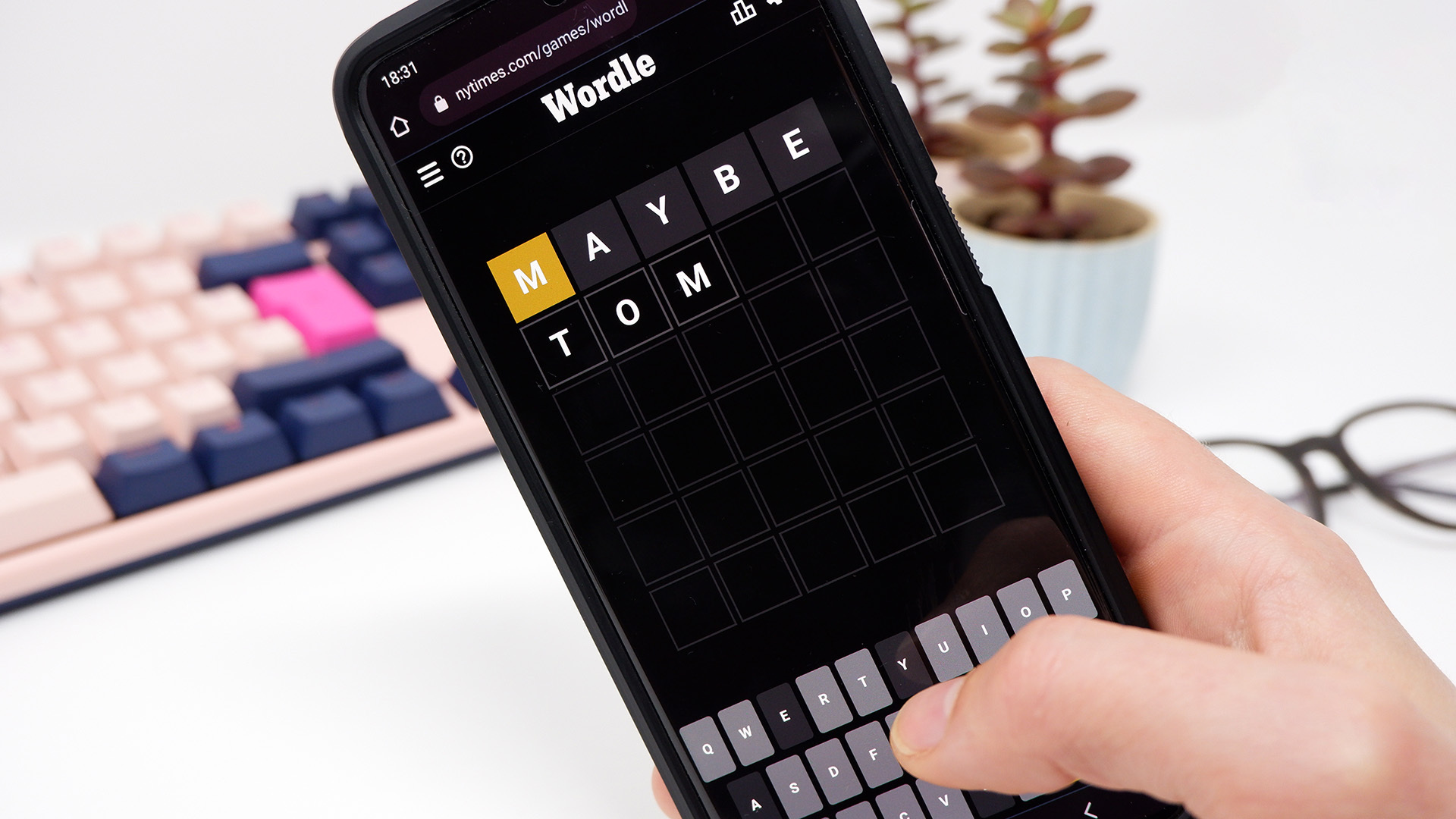Lenovo announced its plans to enter the handheld gaming PC market back in September and two months later, the Legion Go is now finally in Lenovo’s stores. Depending on where you live, two models are up for grabs, with both sporting a huge 8.8-inch screen, lots of RAM and storage, plus a decent sized battery.
Just as with some of the handheld PCs already on the market, the Legion Go uses AMD’s Z1 Extreme (effectively the same silicon as the Ryzen 7 7840U) APU to handle all CPU and GPU duties. That houses eight Zen 4 CPU cores and 12 RNDA 3 GPU compute units, although Lenovo’s UK landing page for the Legion Go suggests that some regions might be offered models using the lower spec Z1 chip.
For US and UK gamers, though, they’ll get the full fat chip, with clock speeds up to 5,100MHz. Helping the chip along is 16GB of LPDDR5X-7500, which isn’t upgradable, and a base storage capacity of 512GB in the form of a PCIe 4.0 TLC SSD. Shoppers in Britain only have that configuration to purchase, but those in the USA can get a version with 1TB of storage.
None of the above is of particular note, as competition in the form of the Asus ROG Ally and Ayaneo Air 1S also boast the same configuration, give or take a CPU brand name here or there. What Lenovo hopes will make the Legion Go stand out is the screen. All models have an 8.8-inch 2560 x 1600 144Hz IPS panel, which is the biggest one in the handheld crowd. It has a decent output of 500 nits, and while OLEDs offer better colours and response times, you can’t criticise the amount of screen you’re getting for the money.
And speaking of which, the price tags are pretty decent, but toward the top end of all the handhelds available. In the US, the 512GB model retails at $699.99, with the 1TB version being $50 more. The UK price for the sole 512GB Legion Go is £700, which is a fair bit more expensive than the 512GB Steam Deck (currently £569) though you are getting a more powerful gaming PC.
The downside to that increased processing power is the drain on the battery and to help offset this, Lenovo has gone with a twin cell 49.2Wh lithium polymer battery. That’s around 23% more power capacity than the battery used in the ROG Ally, which is great but the downside is that the Legion Go is a bit of chonky boi. The base model weighs 650g (1.41 lbs), more than double the mass of the Switch.
(Image credit: Lenovo)
(Image credit: Future)
Steam Deck review: Our verdict on Valve’s handheld.
Best Steam Deck accessories: Get decked out.
Steam Deck battery life: What’s the real battery life?
Lenovo has also copied a specific feature of Nintendo’s much-loved portable console in that the controllers are fully detachable. Given the size of the whole unit, this is a sensible move, as I find playing the ROG Ally for any length of time makes my elbows ache, though I am very ancient and lich-like.
The PC Gamer hardware team managed to grab a hands-on test of the Legion Go when Lenovo first announced it and the general impressions were that the screen is going to be the biggest selling feature. However, as with all handheld PCs, it’s really the operating environment that will make or break it. I find the ROG Ally’s software to be rather clunky to use, especially compared to the Steam Deck, so it will be interesting to see what Lenovo has created for the Legion Go. We’ll let you know, of course, when we have one in for a thorough PC Gamer shakedown.











